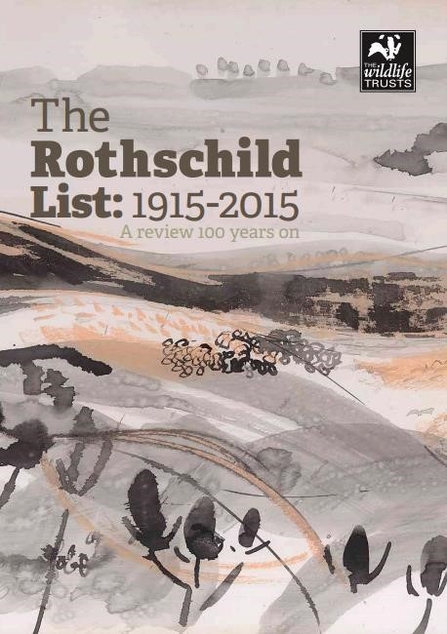Today a new publication celebrates and explores the legacy left by the father of modern nature conservation, Charles Rothschild. Award-winning author Simon Barnes reveals a fascinating and must-read story of how we began to cherish our wild places in a new e-book, Prophet and Loss, illustrated by wildlife artist Nik Pollard.
Prophet and Loss explores Charles Rothschild’s vision for nature 100 years on
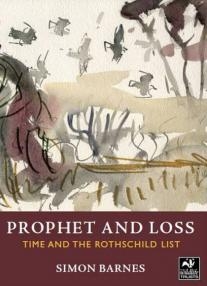
In a moving and insightful story about shifting values, changes in perspective and new expectations, Barnes re-visits seven of 284 special places which Charles Rothschild and his colleagues deemed ‘worthy of preservation’ a century ago, to see how they have fared and reveals a fascinating story about time, our relationship with the natural world and how we can best protect it.
Barnes’ adventures begin at Woodwalton Fen - which Rothschild bought in 1910 and is now part of an inspirational project to create a huge 3,700 hectare wetland. He goes on to evoke the wildness of shingle beaches, seabird islands, sand dunes, and grasslands and revels in marsh harriers soaring above the reeds at Woodwalton Fen, corkscrewing ravens at Kynance Cove, squadrons of gannets at Bass Rock and shingle flora at Aldeburgh, insect showers and mating dragonflies at Kenfig, and red kites and brown argus of Hartslock Wood. Barnes words are moving and potent.
Prophet and Loss allows readers to celebrate and reflect on Rothschild’s achievements, to immerse themselves in today’s wild world. It’s a must-read!
He urges everyone to “Go to one wild place after another the length and breadth of this country and look about. Look about and you will understand the extent of Rothschild’s achievement and more importantly, you will also understand a great deal more about nature.”
Simon Barnes didn’t anticipate it would be such an intense and powerful journey. He says: “It was a real adventure and an unexpectedly rewarding experience. I took this on as an interesting piece of work. I didn't expect it to be a pilgrimage. It was a journey to the past with a thrilling glimpse of the future and it had me enthralled. It was all about wild Britain and wild time and why we need wildness in our lives - why we always have needed wildness and why we always will.
“I was following the footsteps of a pioneer named Charles Rothschild, a man I knew only as a name. Sometimes, in a place rich in history, you get a sudden moment of piercing empathy with the people who were here before. I came to understand in a few flashes of insight, the nature of the love that made him one of the great prophets of the conservation movement. He feared the loss of wild places and he was right to do so, many wonderful places are now gone for good.
“But because he showed us how to put a value on wild places, some of them have been saved, and because of the many people who have followed where Rothschild led, some things have actually got better. He was a great man: but he'd hate us to celebrate his achievement. He'd much prefer us to go out and savour the wild places - and to keep them safe.”
Get Involved
-
Download Prophet and Loss for just £1 (a pdf is available on The Wildlife Trusts’ website for anyone without an e-reader)
-
Share your thoughts on twitter using #RothschildList
-
Visit a Rothschild Reserve and experience for yourself the wildness that Charles Rothschild and his colleagues sought to save. (Map at wildlifetrusts.org/rothschild)
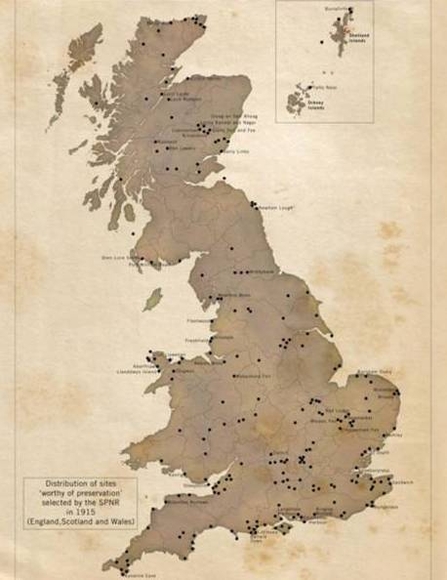
Background
In the early twentieth century Charles Rothschild, a brilliant naturalist and banker, realised that a concerted effort and plan was needed to save wild places before they all disappeared forever. In 1912 when he founded the Society for the Promotion of Nature Reserves, which would later become The Wildlife Trusts, and over the period of a few years Rothschild drew up a list of 284 places recognised as ‘worthy of preservation’ which went on to form the backbone of nature conservation as we know it today. Recommendations of places were sent in from across Britain and Ireland and Rothschild and his colleagues visited and surveyed some of them. The outbreak of the First World War, in 1914, was a huge setback for Rothschild’s embryonic movement but, despite war and illness (he suffered from the debilitating disease encephalitis), he persevered.
Simon Barnes’ journey starts 100 years after this list – the first of its kind – was published. Some of the Rothschild Reserves have been saved, others have fared less well; ancient grasslands have been lost under the plough, heathlands lost to conifer plantations and ancient woods destroyed by the urban sprawl of modern life. And others have been all but lost.
Tony Juniper, The Wildlife Trusts’ President, said: “In Rothschild’s day people thought that conserving whole swathes of land for wildlife was an expensive luxury. Today The Wildlife Trusts face the same challenges. Less and less public money is apportioned to conservation measures and those in power place wildlife and the protection of every aspect of our natural world very far down in their priorities.”
Like Rothschild, The Wildlife Trusts persevere and continue to challenge governments to act for nature by introducing new laws for its restoration and to increase everyone’s access to it. The health of our economy and communities, education and our own wellbeing are inextricably linked to the health of the natural world and our quality of life will fail if society doesn’t take action for nature.
Go to one wild place after another...Look about and you will understand the extent of Rothschild’s achievement and more importantly, you will also understand a great deal more about nature
Tony continues: “As 2015 draws to a close we celebrate Charles Rothschild the man who, 100 years ago, founded conservation as we know it today. Prophet and Loss allows readers to celebrate and reflect on Rothschild’s achievements, to immerse themselves in today’s wild world. It’s a must-read!”
The Wildlife Trusts’ vision for a landscape-scale approach to conservation involves enlarging, improving and joining-up areas of land to help wild habitats and species adapt to climate change and for the benefit of people. Through the development of more than 150 conservation schemes across the UK, known as Living Landscapes, the once traditional focus of wildlife conservation is being broadened to aid nature’s recovery on a wider scale: from protecting individual nature reserves to considering the landscape as a whole. The Wildlife Trusts’ nature reserves form the basis for these schemes. Its approach relies on participation and partnerships with landowners, local communities, land managers, government agencies, planners, politicians and others.
Simon Barnes concludes: “What there is left is there for us all to enjoy, for conservation is always at least in part about people, or if you prefer, about joy. We best conserve where there is human love for the wild places and the creatures that live there.”
The Wildlife Trusts are grateful to the Rothschild Foundation for supporting this project.
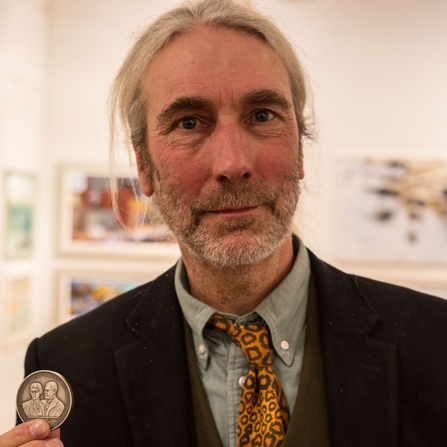
Notes for editors:
Simon Barnes has inspired a generation about the wonders of wildlife through his books, many of which encourage the reader to discover nature for themselves. He has appeared in a number of programmes on BBC Radio 4 and 3, including a reading of his book, How to Be a Bad Birdwatcher. Since moving to Norfolk, from Suffolk, he’s been creating his own wild place in a few acres of marshland beyond the river, with 99 bird species on his list.
In 2014, Simon Barnes was awarded The Charles Rothschild and Miriam Rothschild medal, a unique and prestigious award, created by The Wildlife Trusts in honour of conservation pioneer, Charles Rothschild, and his daughter, Miriam.
Simon is an active council member of the World Land Trust, which buys land for wildlife conservation on behalf of organisations in the developing world. He is a patron of Save the Rhino, Campaign Against Raptor Persecution and honorary vice-president of the Bumblebee Conservation Trust.
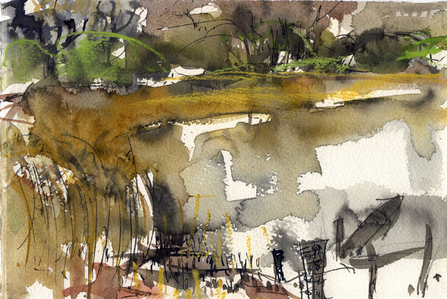
Nik Pollard
Nik Pollard is a painter, printmaker and illustrator. His work stems from a passion for the natural world and is generated from sustained, direct observation. Nik makes drawings and paintings in the field and develops ideas through printmaking in the studio. He has participated in a number of national and international art projects highlighting the importance and vulnerability of specific habitats and wildlife in support of conservation. Nik is a published writer and illustrator of children’s picture books and has served on council for the Society of Wildlife Artists. He trained at the Royal College of Art.
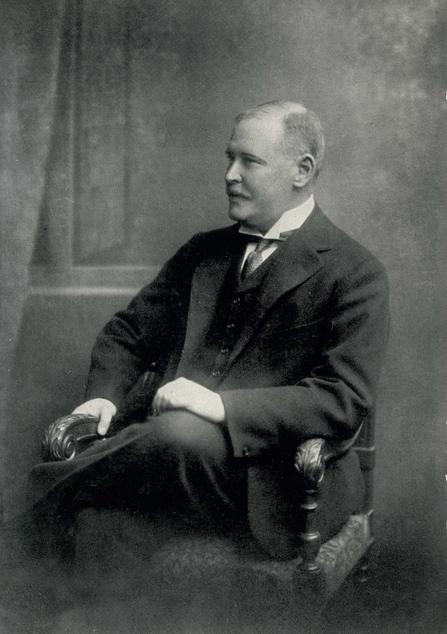
Charles Rothschild
Charles Nathaniel Rothschild (1877 – 1923) was a pioneer of nature conservation and inspirational founder and first chairman of the Society for the Promotion of Nature Reserves (SPNR). In a clear echo of the modern approach of The Wildlife Trusts, Rothschild gathered together an influential band of politicians, landowners, scientists and businessmen – such as the Speaker of the House of Commons, the Foreign Secretary and eminent ecologists of the day, such as Professor Arthur Tansley.
In May 1912 Charles Rothschild held a meeting to discuss his radical idea about saving places for nature. This meeting led to the formation of the Society for the Promotion of Nature Reserves, which would become The Wildlife Trusts, and signalled the beginning of UK nature conservation as we know it. Together the group helped Rothschild identify more than 280 of the country’s top wildlife sites. The Society worked hard to secure Government protection for sites across the UK that they considered ‘worthy of preservation’, but it was not until the 1940s that nature conservation made it onto the statute books with the National Parks & Access to the Countryside Act in 1949 which established the first National Parks and Sites of Special Scientific Interest. These key designations enabled the realisation of Rothschild’s vision.
The Rothschild Reserves
Simon Barnes and Nik Pollard visited Woodwalton Fen (Cambs), Kynance Cove (Cornwall), Bass Rock (North Berwick), Aldeburgh (Suffolk), Harlestone Heath (Northants), Kenfig (Bridgend) and Hartslock Wood (Oxfordshire).
Many of the 284 places on Rothschild’s list are now protected by law, although many have also suffered losses of wildlife and habitat over the last century. The Wildlife Trusts own or care for 16% of them, with the majority owned or managed by government agencies. The National Trust own or care for 12% and the RSPB 5%. Most of the sites (70%) are ‘intact’ or ‘mostly intact’, with 16% categorised as ‘partially destroyed’ and 14% as ‘destroyed’ or ‘mostly destroyed’.
In 2014 The Wildlife Trusts published a report on the 17 Irish sites on the Rothschild list. This was a joint publication involving the Irish Wildlife Trust, An Tasice, University College Cork and The Wildlife Trusts. The report was funded by the Carnegie UK Trust. You can download a copy via our history page.
The Wildlife Trusts
There are 47 individual Wildlife Trusts covering the whole of the UK. All are working for an environment rich in wildlife for everyone. The Wildlife Trusts’ vision for a landscape-scale approach to conservation involves enlarging, improving and joining-up areas of land to help wildlife adapt to climate change and for the benefit of people. Through the development of more than 150 conservation schemes across the UK, known as Living Landscapes, the once traditional focus of wildlife conservation is being broadened: from protecting individual nature reserves to considering the landscape as a whole. Its approach relies on participation and partnerships with landowners, land managers, government agencies, planners, politicians and others.
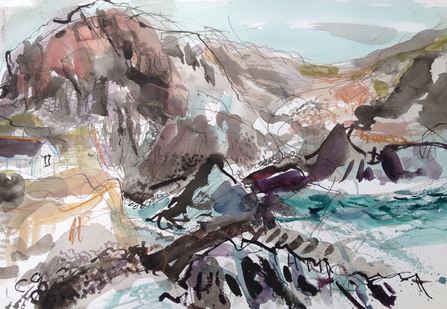
Kynance

